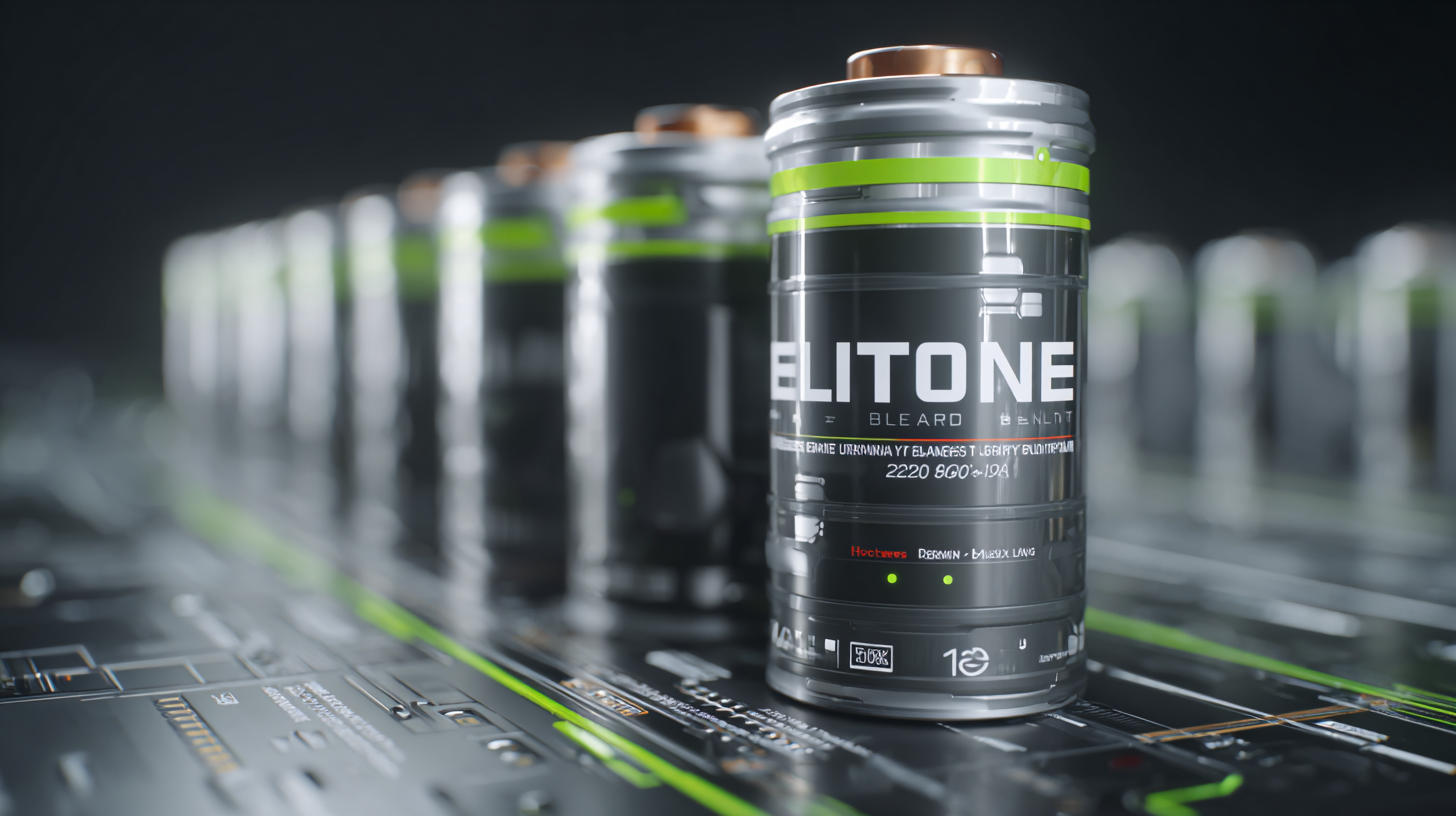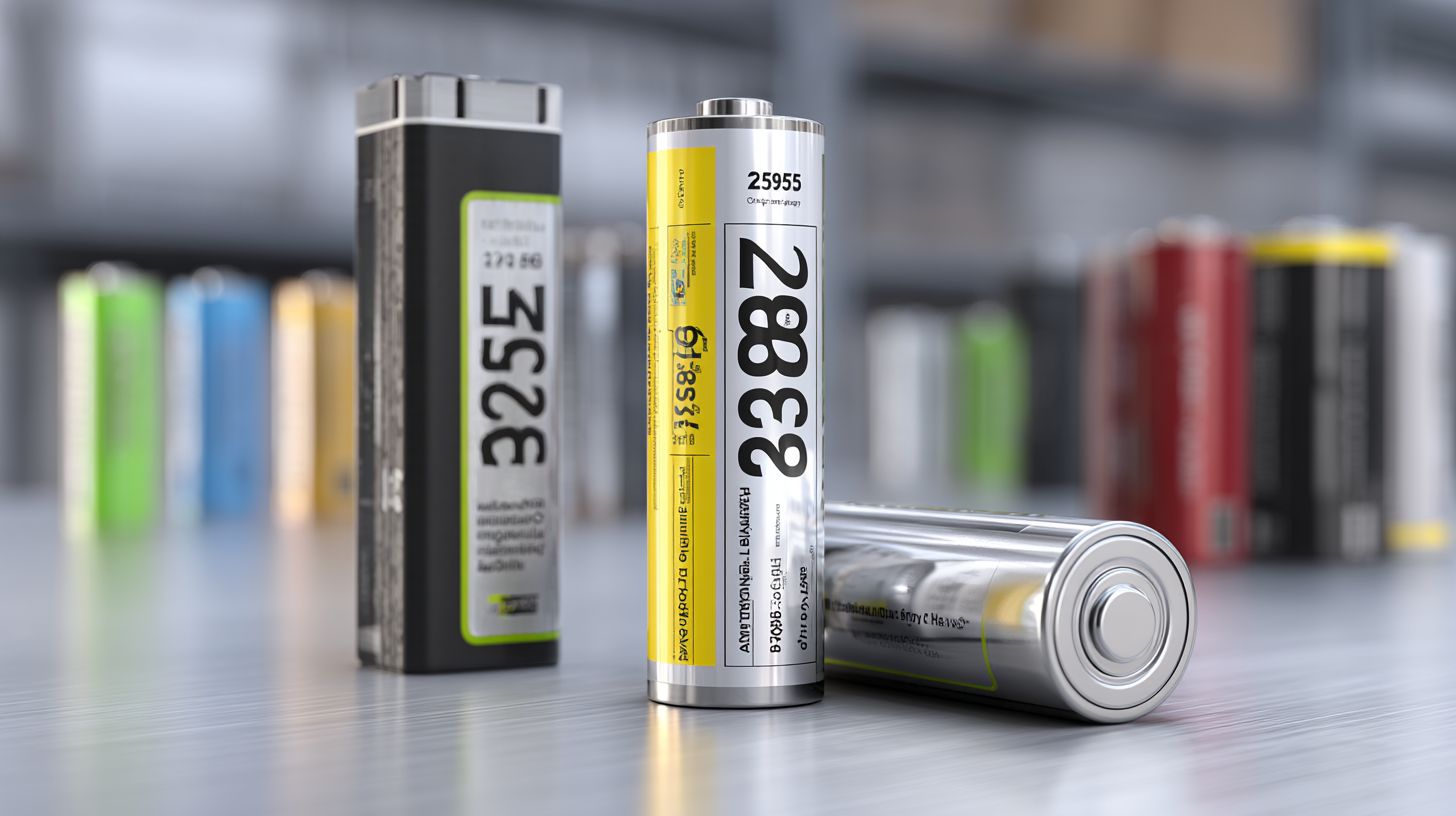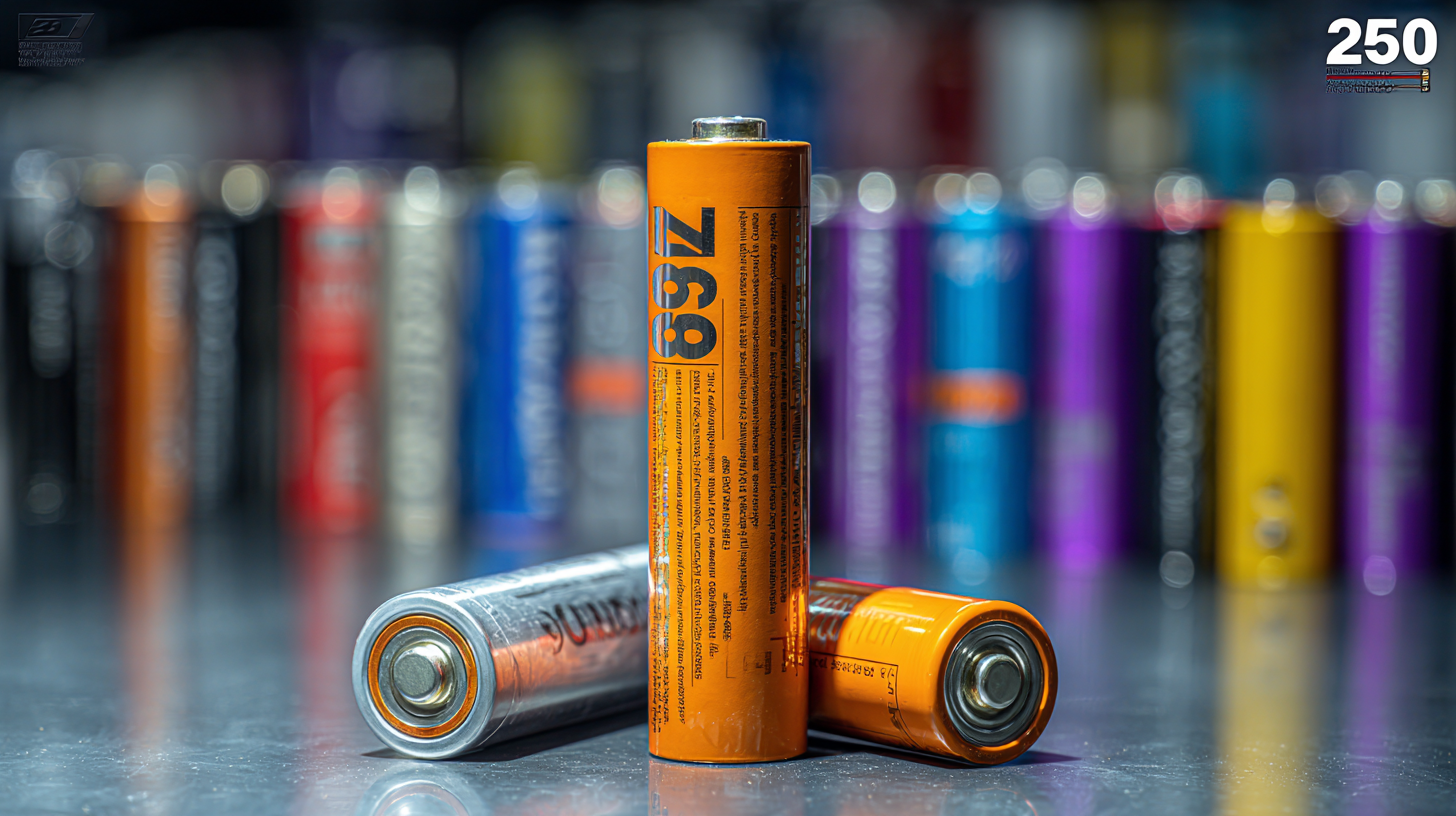Leave Your Message
In 2023, the demand for high-capacity batteries has surged, particularly in sectors such as electric vehicles (EVs) and renewable energy storage. As industries pivot towards sustainable energy solutions, 26650 cylindrical batteries have emerged as a key player due to their superior energy density and cycle life. Recent market studies indicate that the global cylindrical battery market is projected to reach USD 10 billion by 2025, with a significant portion attributed to the adoption of 26650 cells. This trend has prompted manufacturers to explore diverse 26650 cylindrical battery pilot line options to enhance production efficiency and scalability. In this blog, we will delve into the top alternatives available in 2023, evaluating their performance, technological advancements, and potential impact on the battery market landscape.

The global 26650 battery market is witnessing significant growth, driven by the rising demand for high-capacity energy storage solutions. According to a recent report by MarketsandMarkets, the market size for cylindrical lithium batteries, including the 26650 variant, is expected to reach approximately $34 billion by 2025, growing at a compound annual growth rate (CAGR) of 15.7% from 2020. This surge can be attributed to the increasing applications of these batteries in electric vehicles (EVs), renewable energy systems, and portable devices, which require efficient and long-lasting power sources.
In 2023, the trends indicate a shift towards more sustainable and efficient battery production processes. Research and Markets project a progressive transition towards greener technologies, with the adoption of advanced materials and manufacturing techniques that reduce environmental impact. Additionally, the development of solid-state batteries is poised to revolutionize the 26650 market, offering higher energy densities and safety profiles. This transformation not only meets consumer demands for better performance but also aligns with global sustainability goals, creating opportunities for innovation and investment in this burgeoning segment of the battery market.

The 26650 cylindrical battery industry is experiencing significant growth, driven by the increasing demand for high-capacity energy storage solutions in various applications, including electric vehicles (EVs), renewable energy systems, and high-performance consumer electronics. According to a recent market report by Fortune Business Insights, the global demand for cylindrical batteries is expected to reach USD 38.7 billion by 2027, with a Compound Annual Growth Rate (CAGR) of 15.2%. This surge highlights the critical role that leading manufacturers play in bolstering technological advancements and meeting consumer expectations.
Key players in the 26650 battery market include established giants like Tesla, Panasonic, and LG Chem, each leading the charge with innovative technologies and robust production capabilities. Panasonic's collaboration with Tesla on the Gigafactory project aims to produce hundreds of thousands of high-performance batteries, emphasizing a commitment to reducing costs and improving energy density. Meanwhile, LG Chem has made notable progress with its advanced NCA (nickel-cobalt-aluminum) chemistry, targeting significant efficiency gains. These companies, along with emerging entrants and niche manufacturers, are collectively shaping the future landscape of the 26650 battery sector, ensuring that it remains competitive and responsive to evolving market needs.

In 2023, the demand for 26650 cylindrical batteries continues to grow, prompting an exploration of technological innovations that are reshaping this battery segment. With rising energy demands and a push for sustainability, manufacturers are investing in alternative battery technologies that offer improved performance and environmental benefits. Advances in materials science, such as the development of new cathode and anode compositions, have led to batteries that provide higher energy densities while maintaining safety standards.
Additionally, innovative manufacturing techniques are emerging that enhance the scalability and efficiency of 26650 battery production. For instance, the integration of automation and AI in the production line is reducing costs and minimizing waste, making these alternatives more competitive in the market. As consumers become increasingly aware of environmental impact, the shift toward batteries that use less harmful raw materials and offer recyclability is becoming paramount. These technological breakthroughs not only promise better performance but also align with global sustainability goals, marking a significant turning point in the energy storage landscape.
| Option Name | Chemistry Type | Capacity (mAh) | Voltage (V) | Cycle Life (Cycles) | Environmental Impact |
|---|---|---|---|---|---|
| Pilot Line A | Li-ion | 5000 | 3.7 | 3000 | Low |
| Pilot Line B | LiFePO4 | 4500 | 3.2 | 2000 | Medium |
| Pilot Line C | LTO | 3500 | 2.4 | 50000 | Very Low |
| Pilot Line D | NMC | 4000 | 3.6 | 2500 | Medium |
| Pilot Line E | Solid-State | 6000 | 3.7 | 5000 | Very Low |
As the demand for high-capacity energy storage solutions continues to surge, the 26650 cylindrical battery has garnered significant attention in recent years. According to a report by MarketsandMarkets, the lithium-ion battery market, which the 26650 category falls under, is expected to reach $129 billion by 2025, with a substantial portion of this growth driven by applications in electric vehicles and renewable energy storage systems. The 26650 batteries stand out due to their larger size and capacity, typically providing energy densities of around 100-150 Wh/kg, making them a preferred choice for high-drain devices and machinery.
Market consumption trends reveal a noteworthy shift as industries look for alternatives that enhance efficiency and sustainability. In a recent survey by Research and Markets, it was found that nearly 48% of manufacturers in the renewable sector are increasingly incorporating 26650 batteries into their systems, largely due to their ability to accommodate larger energy storage needs. The EV market alone is projected to see a demand increase of 25% annually for cylindrical battery cells, indicating that the 26650 format will play a crucial role in meeting future energy requirements while addressing supply chain challenges and expanding recycling initiatives.
The 26650 cylindrical battery is gaining attention in the electric vehicle (EV) industry not only for its energy density but also for its potential to support sustainable manufacturing practices.
As demand for eco-friendly solutions rises, manufacturers are exploring innovative ways to minimize their environmental impact. This includes the efficient use of raw materials, reduction of hazardous substances, and the adoption of renewable energy sources in production processes.
Recent advancements in battery technology, including the shift towards solid-state batteries, create an opportunity for the 26650 sector to focus on sustainability.
Manufacturers are now developing methods to recycle old batteries effectively, thereby reducing waste and conserving valuable resources.
Additionally, the integration of driverless EV technology requires batteries that are not only efficient but also produced in a way that aligns with green principles.
As the automotive industry increasingly embraces this shift towards a more environmentally conscious approach, the 26650 battery's role in driving these changes becomes even more significant.
